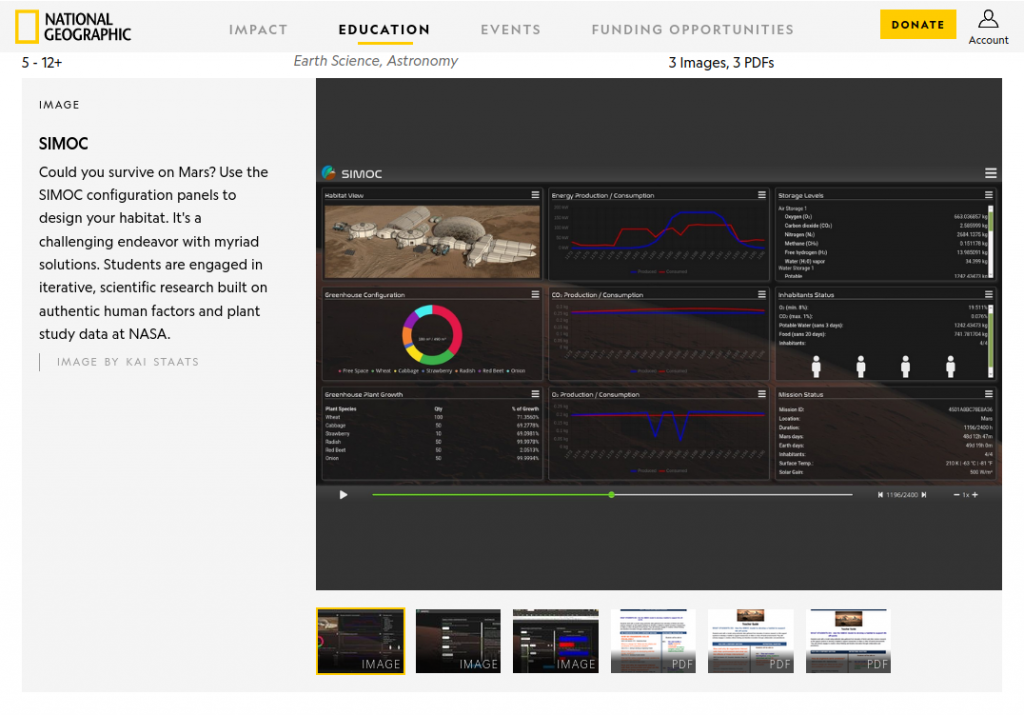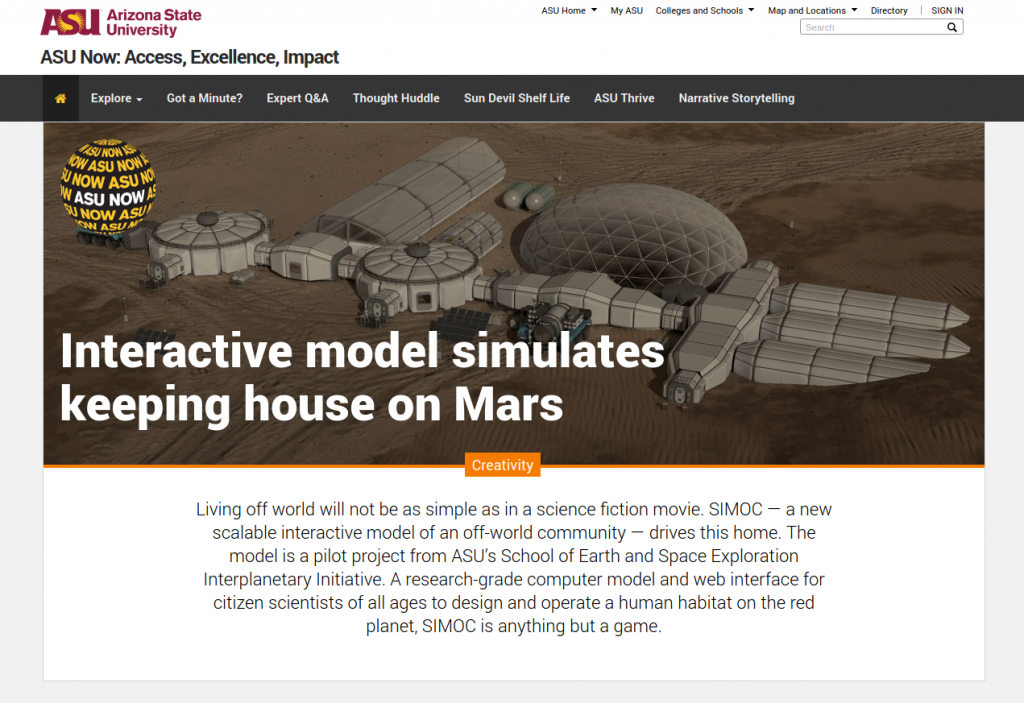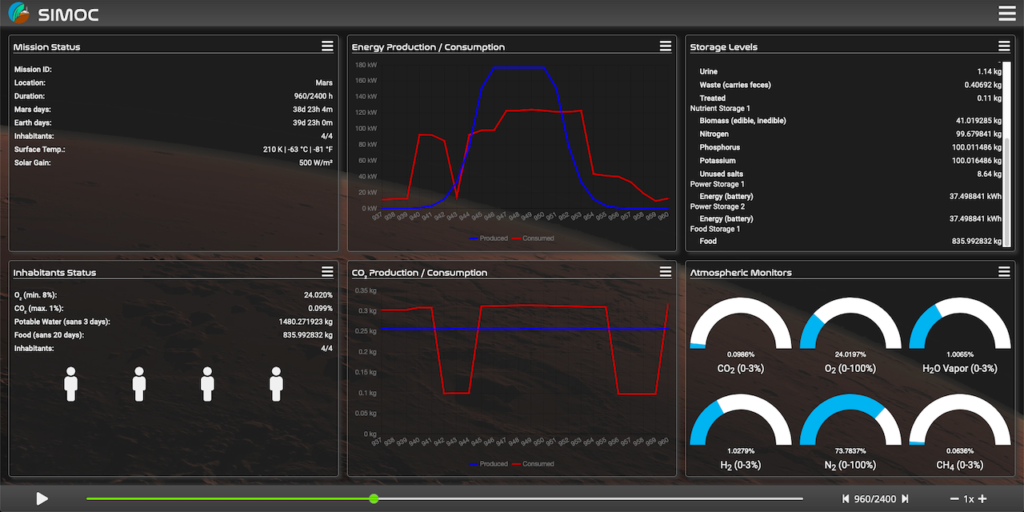SIMOC talk, live demo for NASA, June 18, 2020
Kai Staats, project lead for SIMOC gave a talk and live demonstration of SIMOC to ~75 NASA interns and staff. He also introduced SAM, the proposed, hi-fidelity research center for off-world habitats his team is developing at the Biosphere 2. The intent is to build the world’s most accurate simulation of off-world habitation, complete with airlock, hermetically sealed crew quarters and greenhouse, and use of pressure suits for all ingress, egress, and field activities.
The talk was well received, followed by a number of good questions from those who participated in the call.
“Thank you for taking the time to speak with us! I really enjoyed your talk. Thank you again!” -Kate
“I enjoyed your insightful and interesting lecture! Thank you for sharing your research with us!” -Ruth
“Thanks for the awesome lecture Kai! Your chemical and energy flow models were really, really interesting to learn about, and I’m looking forward to playing around with SIMOC. Best of luck with the Biosphere 2 buildup!” -Jeffrey
“Thank you for sharing your unique story … I was very interested to hear about your time on the research vessel. That sounds like such an incredible opportunity and must have allowed you to make a great impact in the world of science!” -Mina
“Thank you for your wonderful dynamic presentation. I had never heard about these habitat analogs and it was fascinating to get to see how they worked and the goals they strive for. I often feel like it can be hard to be exposed to non-engineering projects at NASA so thank you for letting us see into your work.” -Gabby





